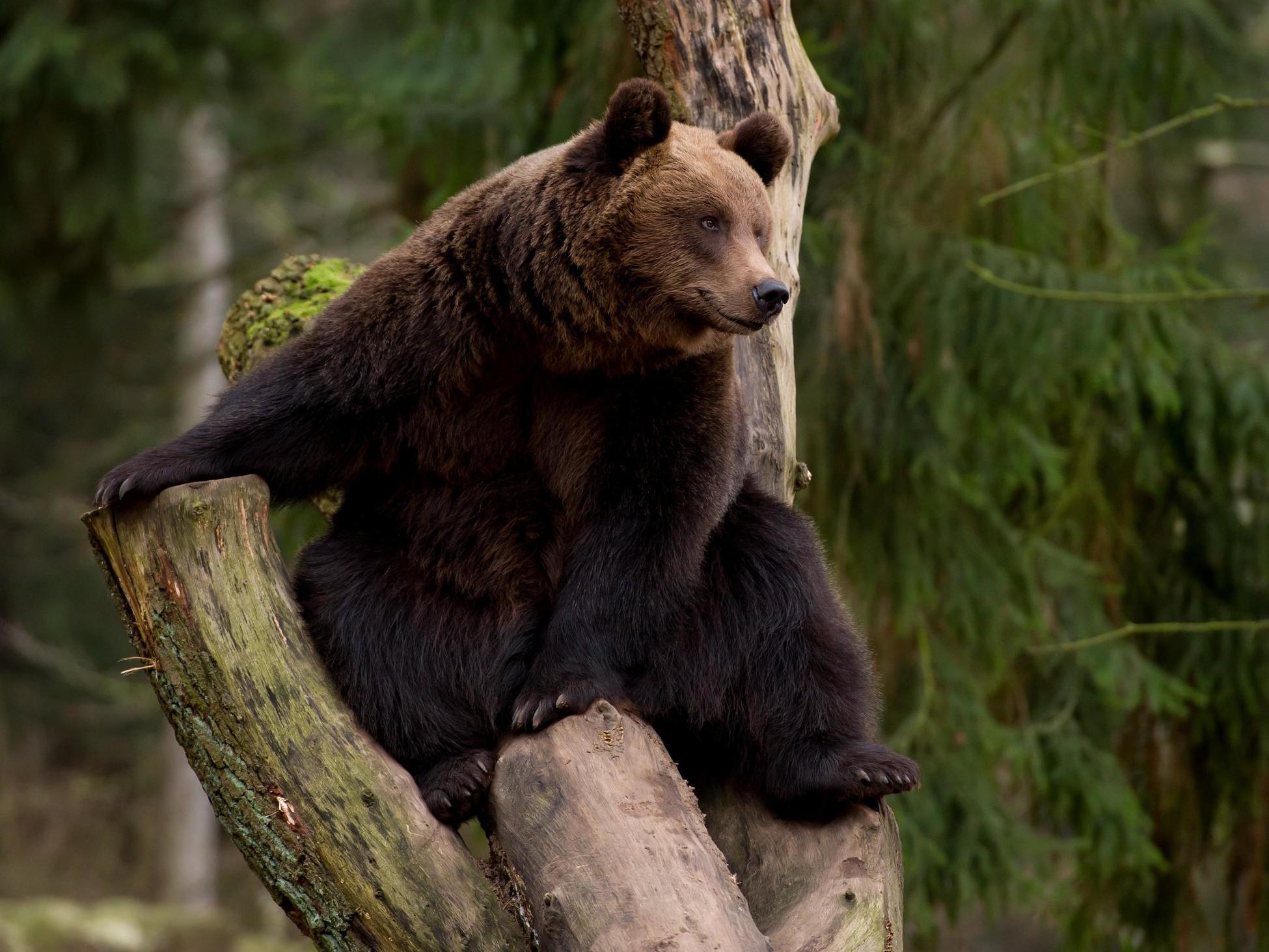Native bears and wolves to live side by side in Britain for the first time in 1,000 years
'Charismatic creatures' will also live alongside two Eurasian lynx and two wolverines

Native bears and wolves will live side by side for the first time in more than 1,000 years in a patch of ancient British woodland.
European brown bears, which are thought to have disappeared in the Middle Ages, will roam beside grey wolves, the last of which were hunted to extinction in the 17th century, in a wood near Bristol.
The project, called Bear Wood, will give visitors the chance to see how these animals would have coexisted in the woodland that used to cover much of Britain.
Today only 13 per cent of the UK's total land area is covered in woodland and only 2 per cent is covered by ancient woodland, which has existed continuously since 1600 or before. Across the EU, an average of 35 per cent of land is covered in woodland.
Two Eurasian lynx and two wolverines will also live beside the bears and wolves in Bear Wood.
At first the four species will live in separate areas of the woodland, but it is hoped that in the near future they will be able to share the same 10,000 sq metre paddock.
From Wednesday the wolves will be brought into the adjoining paddock next to the bears which have been getting accustomed to the woodland over the past few months.
Visitors will be able to observe the animals from a raised wooden walkway and a viewing den with floor-to-ceiling glass windows
Dr Justin Morris, the chief executive of Bristol Zoological society, said: “Bears went extinct in the UK in the Middle Ages and the last wolves roamed free until around the 17th century, so it will be the first time the two animals have coexisted in around 1,000 years.”
“At the moment the different species are living in paddocks adjacent to one another, but at some point in the near future we will introduce them – when their keepers decide the time is right.”
Dr Morris said that it was already “amazing” to observe the bears exploring the ancient woodland.
“It’s fascinating to see the bears climbing to the top of massive ash and oak trees.
"Of course, they are perfectly adapted to climb these trees, but it’s surprising them balancing on the smaller branches.”
He added that experience of living alongside other native species would be enriching for the animals.
“It will be interesting to observe how they interact with one another and adapt to the different sights and smells they encounter.”
Dr Morris also said that the woodland itself is likely to benefit from the arrival of its new inhabitants.
“Bears naturally clear undergrowth. And with more light coming through, this will create a new habitat and encourage new species to grow.”
He added that he hoped the reintroduction of these “charismatic species” to the wood will encourage visitor to think about the issues of climate change and rewilding.
“We're excited that people are starting to recognise the value of British woodland, which is often overlooked when zoos concentrate on more exotic locations such as the African savannah and rainforest.
“We have a unique change to reach out to people so they can recognise the importance of our ancient woodland that remains.”
Last month, the government passed a law to cut greenhouse gas emissions to net zero by 2050.

One of the ways the government’s Committee on Climate Change say this target can be achieved is by offsetting emissions by planting trees and creating woodland.
“Ancient woodland is one of the richest habitats for wildlife in the UK, providing a home for hundreds of species of animals and plants,” explained Dr Christoph Schwitzer, chief zoological officer at Bristol Zoological Society.
“In order to protect what remains, we need to inspire the next generation about the importance of this unique habitat. We believe that the best way to do this is to immerse people in these woods and show them the amazing diversity that is at stake.”
Join our commenting forum
Join thought-provoking conversations, follow other Independent readers and see their replies
Comments